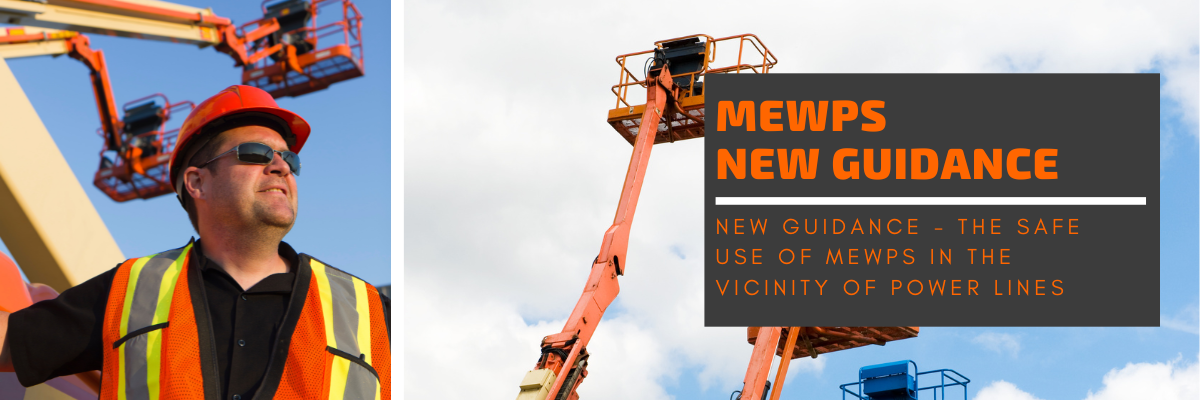Introduction
As a company who specialise in safe working at height we ensure that through our memberships and partnerships we are at the forefront of safety for all working at height enquiries and safety. We have started to see an increase in sales and enquiries for MEWPs (Mobile Elevating Work Platforms) as customers are using them as a tower and scaffolding replacements due to the rapid elevation time and additional safety benefits these systems offer.
The International Powered Access Federation (IPAF) have recently issued new guidance for users of MEWPs to reduce injuries and fatalities when working around power lines, this blog post gives a diluted version of these guidelines and a link to the full guidance.
Why Has New Guidance Been Issued?
IPAF collates incident reports received from around the world who share their experiences and information when working at height to assist others to stay safe and avoid similar mistakes when injury and accidents occur. Whilst analysing the data it has come to the attention of IPAF that incidents regarding MEWPs and electrocution has been on the increase since 2015, the most worrying statistic of all, is the majority of these incidents are nearly always fatal. The new guidance gives assistance, reassurance and information to keep workers safe when working around powerlines.
What Does The New Guidance Hope To Achieve?
A short answer to the above question is; to reduce and eradicate the number of accidents and fatalities when working around powerlines on mobile elevating work platforms. There are unfortunately some elements of ignorance or a lack of awareness in the industry to help minimise risk and this guidance is just one of the things IPAF are doing to help keep people safe.
This guidance is intended to:
- Provide information for those who plan and manage MEWP operations.
- Provide information on the main causes of electrocutions with power lines.
- Raise awareness to the hazards and risks in working in close proximity to power lines.
- Provide information on the industry sectors where electrocutions and electric shocks occur.
- Identify risk control measures and Safe System of Work (SSoW) to implement and reduce the number of incidents occurring.
- Provide general global guidance for those who undertake tasks to prevent incidents occurring.
Ref: TE-1151-0323-1-en-US
Who Should Read The New Guidance?
Again, in very simplistic terms, any person or organisation that has control of the planning, management and use of MEWPs on site is responsible for ensuring that the product is kept in a safe working condition, this means that anyone who has any involvement in MEWPs should read the guidance and ensure the information is followed. The guidance states the following people specifically should read this new guidance:
The Energy Supply Authority (ESA) Contractor: Responsible for completion of the work. The sub-contractor also has a duty of care to their employees, other sub-contractors, and members of the public. Sub-contractors can be electrical utility companies and include tree care companies.
The Energy Supply Authority (ESA) (main contractor): Commissioning work near to areas and locations where there are power lines. The energy supply authority has a duty of care for the electricity network and performs and organizes service, maintenance and repair work on power lines and associated infrastructure.
The MEWP Operator: The MEWP operator is a person using the MEWP from the work platform or the base/ground controls. They may be employed or self-employed.
Planning Work Around Electricity
As with any work at height a detailed risk assessment should be carried out to note what the hazards are and how they can be avoided. The first step is to assess the environment and ensure the correct MEWP has been selected. If power lines are visible consult ESA to obtain the minimum approach distance required for safe operation. When completing and assessing the risk, consider risk control measures, could the electric line be de-energised or re-routed, have you identified the minimum approach distance, and could you allocate a nominated spotter?
As with users of MEWPs it is recommended the people responsible for carrying out the risk assessment should also be competent and trained, this will ensure they know what the potential risk factors are and can assess the activity in hand, the environment, the equipment being used and the location that requires access.
Emergency Procedures
If a person has contacted a powerline or has revealed an electric shock it is important that you immediately call the emergency services to deactivate the power. You should not approach the MEWP or a person who appears to be having an electric shock.
Further Information
This article is just a quick breakdown of the new guidance issued by IPAF to keep you safe when working near powerlines on MEWPs. The full guidance document can be found in the following PDF. Should you need any further information, training or product information please don’t hesitate to get in contact with our team by calling 01204590232 or using our online contact form.

